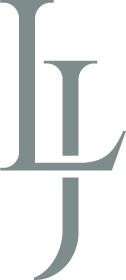When performed correctly, the results of a primary rhinoplasty should last a lifetime, and you shouldn’t need another surgery. But if you’re dissatisfied with the results of your primary rhinoplasty or need further modifications, you can undergo a revision rhinoplasty. Dr. Jeffrey Lisiecki specializes in correcting the mistakes made by other surgeons. He performs highly personalized primary and revision rhinoplasty in NYC that ensure optimal and naturalized results.
About Revision Rhinoplasty
What is revision rhinoplasty?
Revision rhinoplasty is a surgical procedure that corrects the unsatisfying cosmetic or functional results of a previous rhinoplasty procedure. Revision rhinoplasty is also called secondary rhinoplasty, but the term can also refer to your third or fourth nose job. You may undergo a revision rhinoplasty to correct the shaping done by the previous surgeon, to enhance the results of the primary rhinoplasty, or to correct functional problems, such as a collapsed nose, crooked nose, or breathing problems.
Revision rhinoplasty can correct the following:
- Functional problems related to the nose
- Obstructed airways and breathing problems
- Minimal nose projection from the face
- Saddle deformity of the nose
- Asymmetry issues
- Incomplete shaping of the nose
- Extremely thin nose bridge or nasal tip
- Oddly shaped nasal tip
- Extremely narrow or upturned nasal tip
- Signs of obvious cosmetic manipulation

You may need a revision rhinoplasty if:
- You are dissatisfied with the cosmetic or functional results of the primary rhinoplasty
- You have a residual hump or roundness of the nose
- You have asymmetry issues with your nose
- Your nose hasn’t healed properly after the primary rhinoplasty
- You have breathing problems caused by the primary rhinoplasty
- Your nose has developed problematic scar tissues
Dr. Lisiecki’s unique revision rhinoplasty techniques
Dr. Lisiecki performs a highly personalized revision rhinoplasty in NYC based on your unique condition and goals. Like the primary rhinoplasty, the surgeon may perform an open or closed surgery. A closed rhinoplasty involves making incisions inside the nose to modify the shape and size of the nose, and an open rhinoplasty involves making an incision outside the nose (across the columella under the nose) to make major structural changes. The surgeon will select the ideal rhinoplasty technique based on your needs.
After making the incision, the surgeon will reshape the underlying bone and cartilage to adjust the shape and size of the nose. If the septum between the nostrils is deviated, the surgeon may straighten it to restore optimal airflow. In some cases, the surgeon may also take cartilage grafts from other parts of the body, such as the ear or ribs, to rebuild the nose structure. The revision rhinoplasty is usually more complex because it must correct the errors of the primary rhinoplasty.

Recovery after a revision rhinoplasty surgery
The recovery process after the revision rhinoplasty is similar to a primary procedure. You will experience post-treatment swelling, discomfort, and bruising around the treatment site for a few days or weeks. You may also experience nasal congestion. The surgeon will place a nasal splint inside and outside the nose, which will be removed after one week. Most patients can resume their daily activities and work 1 or 2 weeks after the procedure, but strenuous physical activities should be avoided for 3 to 4 weeks.

Revision Rhinoplasty FAQs
What causes revision rhinoplasty?
Revision rhinoplasty is recommended when a patient is unhappy with their previous nasal surgery or has breathing issues, asymmetry, irregularities, or other issues.
How long should I wait before getting a revision rhinoplasty?
Dr. Lisiecki typically recommends waiting at least a year before having revision rhinoplasty. This allows for the nose to heal properly and lets you determine whether there are additional issues you would like fixed. In some instances, it is possible to intervene sooner, so please contact our office to discuss your individual timeline.
Is revision rhinoplasty harder than primary rhinoplasty?
Revision rhinoplasty is more difficult because the surgeon must work with scar tissue and altered nasal structures from the previous surgery. This procedure requires advanced and highly specialized training, and specific techniques, in order to properly fix the issues and achieve the desired results of the patient. Dr. Lisiecki has subspecialty fellowship training in rhinoplasty and revision rhinoplasty. He writes academic articles and textbook chapters, and speaks and teaches at major meetings about rhinoplasty and revision rhinoplasty.
What can I expect during the recovery period for revision rhinoplasty?
The recovery period for revision rhinoplasty can vary depending on the extent of the procedure. However, patients can generally expect to experience some discomfort for several days after the procedure and bruising for up to a couple of weeks after the procedure. Swelling can last longer than after a primary rhinoplasty, depending on the extent of the procedure.
Schedule a consultation with Dr. Lisiecki
Dr. Jeffrey Lisiecki is a highly-trained rhinoplasty surgeon, with specialized training in the latest rhinoplasty techniques, including revision rhinoplasty, functional rhinoplasty, closed rhinoplasty, ethnic rhinoplasty, and more. He carefully examines your nose, discusses your goals, and curates personalized rhinoplasty surgical plans according to your unique goals. If you’re dissatisfied with the cosmetic appearance or functionality of your nose after a primary rhinoplasty, please schedule a consultation with Dr. Jeffrey Lisiecki to explore your options for revision rhinoplasty in NYC.